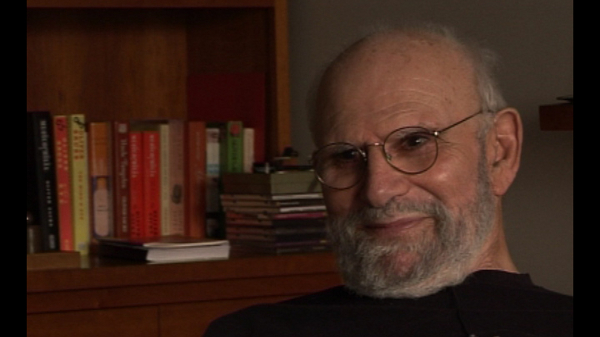NEXT STORY

Photography, migraines and neurology
RELATED STORIES

NEXT STORY

Photography, migraines and neurology
RELATED STORIES


|
Views | Duration | |
|---|---|---|---|
| 101. Difficulty with reading poetry | 1 | 432 | 01:18 |
| 102. Love of photography as a boy | 339 | 01:23 | |
| 103. Photography at UCLA | 312 | 02:19 | |
| 104. Photography in neurology | 311 | 01:19 | |
| 105. Photography, migraines and neurology | 316 | 01:13 | |
| 106. Did I really have that bad a time in Oxford and California? | 362 | 01:32 | |
| 107. My US motorbike travel journal | 357 | 00:23 | |
| 108. My travel journals and experiences | 383 | 02:00 | |
| 109. Seeing the Air Force Academy in Colorado Springs | 327 | 00:42 | |
| 110. Writing and weightlifting in California | 376 | 01:03 |


Photography recurred for me in relation to neurology. When I saw my Awakenings patients, my post-encephalitic patients I would, sort of, have a notebook in one hand and a camera – then it was a little Super 8 film camera – in the other. And later when I saw people with Tourette’s syndrome, the sort of sudden violent movements, I... I felt it important to video all this. And especially with one patient I saw with a sort of super Tourette’s, something I didn’t really perceive, couldn’t perceive with the naked eye, but it became evident as one examined a video. He might have a dozen trains of tics going on simultaneously, each tic lasting, perhaps, 80 or 100 milliseconds and, so that in five minutes you could have a thousand tics, and at that time I thought some of the tics might have meaning, that this represented as it were a very accelerated public dream. And I thought one might write a book based on... on five seconds of video.
Oliver Sacks (1933-2015) was born in England. Having obtained his medical degree at Oxford University, he moved to the USA. There he worked as a consultant neurologist at Beth Abraham Hospital where in 1966, he encountered a group of survivors of the global sleepy sickness of 1916-1927. Sacks treated these patients with the then-experimental drug L-Dopa producing astounding results which he described in his book Awakenings. Further cases of neurological disorders were described by Sacks with exceptional sympathy in another major book entitled The Man Who Mistook His Wife For A Hat which became an instant best seller on its publication in 1985. His other books drew on his rich experiences as a neurologist gleaned over almost five decades of professional practice. Sacks's work was recognized by prestigious institutions which awarded him numerous honours and prizes. These included the Lewis Thomas Prize given by Rockefeller University, which recognizes the scientist as poet. He was an honorary fellow of both the American Academy of Arts and Letters and the American Academy of Arts and Sciences, and held honorary degrees from many universities, including Oxford, the Karolinska Institute, Georgetown, Bard, Gallaudet, Tufts, and the Catholic University of Peru.
Title: Photography in neurology
Listeners: Kate Edgar
Kate Edgar, previously Managing Editor at the Summit Books division of Simon and Schuster, began working with Oliver Sacks in 1983. She has served as editor and researcher on all of his books, and has been closely involved with various films and adaptations based on his work. As friend, assistant, and collaborator, she has accompanied Dr Sacks on many adventures around the world, clinical and otherwise.
Tags: Awakenings
Duration: 1 minute, 19 seconds
Date story recorded: September 2011
Date story went live: 02 October 2012